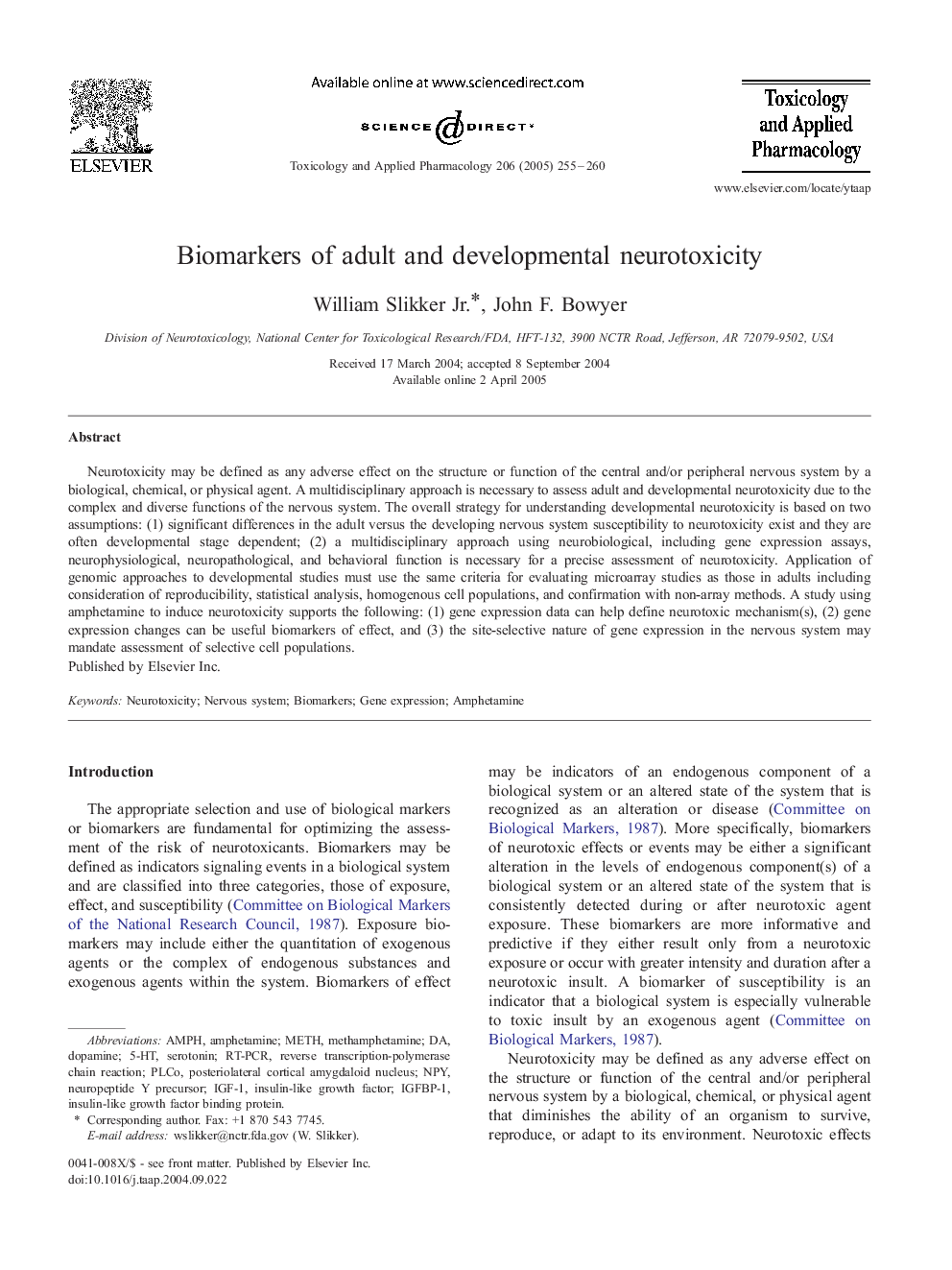| Article ID | Journal | Published Year | Pages | File Type |
|---|---|---|---|---|
| 9018204 | Toxicology and Applied Pharmacology | 2005 | 6 Pages |
Abstract
Neurotoxicity may be defined as any adverse effect on the structure or function of the central and/or peripheral nervous system by a biological, chemical, or physical agent. A multidisciplinary approach is necessary to assess adult and developmental neurotoxicity due to the complex and diverse functions of the nervous system. The overall strategy for understanding developmental neurotoxicity is based on two assumptions: (1) significant differences in the adult versus the developing nervous system susceptibility to neurotoxicity exist and they are often developmental stage dependent; (2) a multidisciplinary approach using neurobiological, including gene expression assays, neurophysiological, neuropathological, and behavioral function is necessary for a precise assessment of neurotoxicity. Application of genomic approaches to developmental studies must use the same criteria for evaluating microarray studies as those in adults including consideration of reproducibility, statistical analysis, homogenous cell populations, and confirmation with non-array methods. A study using amphetamine to induce neurotoxicity supports the following: (1) gene expression data can help define neurotoxic mechanism(s), (2) gene expression changes can be useful biomarkers of effect, and (3) the site-selective nature of gene expression in the nervous system may mandate assessment of selective cell populations.
Keywords
Related Topics
Life Sciences
Environmental Science
Health, Toxicology and Mutagenesis
Authors
William Jr., John F. Bowyer,
